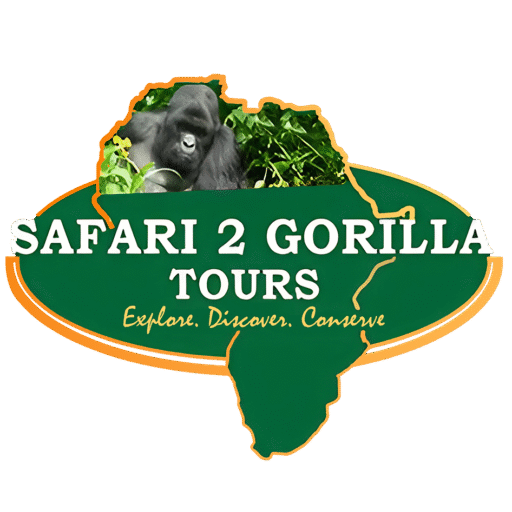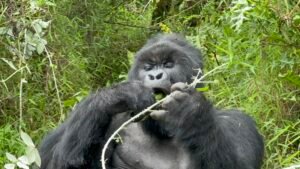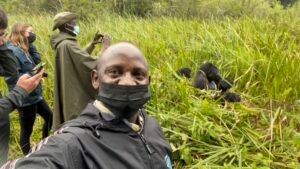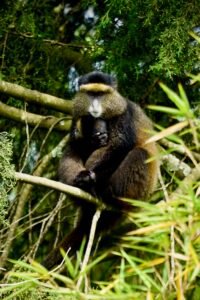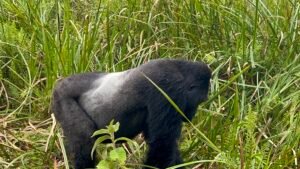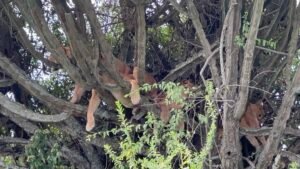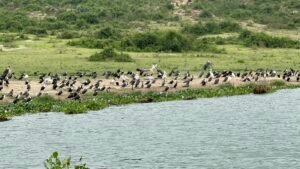Understanding Gorilla Safaris and Their Costs
Gorilla safaris offer travelers a unique opportunity to observe endangered mountain gorillas in their natural habitat. These remarkable experiences often take place in national parks, with Uganda being one of the premier destinations globally due to its diverse wildlife and stunning landscapes. The country is home to over half of the world’s remaining mountain gorillas, primarily residing in the Bwindi Impenetrable National Park and the Mgahinga Gorilla National Park, making Uganda an ideal location for safari enthusiasts.
The costs associated with embarking on a gorilla safari can vary significantly based on several factors, including permits, accommodation, transportation, and food. One of the most substantial expenses is the gorilla trekking permit, which grants travelers access to the gorillas. As of now, the permit costs approximately $700 per person for a single trek in Uganda, and it is essential to secure these permits in advance due to limited availability. Furthermore, there are additional fees related to park entrance, which can range from $40 to $100 per day depending on the specific park and activities.
In addition to permit costs, accommodation can be another critical factor in budgeting for a gorilla safari. Options vary from luxury lodges to more budget-friendly guesthouses, with prices ranging from $50 to over $400 per night. Transportation is another necessary expense, whether opting for self-drive, private hire, or organized safari tours. The cost of food must also be considered; many lodges provide meals as part of their service, while dining out can increase daily expenditures.
Ultimately, understanding the financial aspects of gorilla safaris allows travelers to allocate their resources effectively, ensuring they can prioritize crucial components of their adventure while staying within budgetary constraints.
Choosing the Right Time for Your Safari
Planning a budget gorilla safari in Uganda requires careful consideration of the timing to ensure an optimal experience while managing costs. The best time to embark on your gorilla trekking adventure largely depends on seasonal factors, including weather conditions, gorilla movement, and peak tourist seasons. Uganda’s prime gorilla trekking months typically fall between December to February and June to September. During these periods, the weather is relatively dry, making for easier trekking conditions through the dense rainforests of Bwindi Impenetrable National Park and Mgahinga Gorilla National Park.
Weather plays a significant role in your safari experience. Dry seasons promote more stable ground conditions, reducing the likelihood of muddy trails, which can hinder accessibility. Rainy seasons, on the other hand, present challenges, including slippery paths and increased difficulty in tracking the gorilla families. However, these wet months, particularly March to May and October to November, may present opportunities for budget-conscious travelers to take advantage of reduced accommodation rates and lower entry fees into the parks. Furthermore, wildlife behavior may shift during rainy seasons, with gorillas often relocating to areas with better food availability, which can affect sighting success.
Another compelling consideration is the peak tourist seasons. During the dry months, Uganda experiences a surge in tourism, with higher prices for lodging, permits, and guided tours. To strike a balance between affordability and a rewarding experience, travelers may opt to schedule their safari during the shoulder months at the onset or end of the wet seasons. This strategy often allows visitors to enjoy favorable weather conditions while benefitting from lower prices and fewer crowds, leading to an extraordinary gorilla safari without significantly impacting the budget.
Budget-Friendly Accommodation and Transportation Options
When planning a budget gorilla safari in Uganda, the selection of accommodation plays a pivotal role in the overall experience and financial outlay. There are several options available to cater to a variety of budgets. Luxury lodges, such as those located in Bwindi Impenetrable National Park, provide lavish amenities, exquisite dining, and unmatched views, but they can come at a high price. For travelers looking to experience the beauty of Uganda without the associated costs of luxury, mid-range lodges and guesthouses present a more affordable yet comfortable alternative. These options often feature cozy lodging and facilities tailored for safari-goers, allowing guests to immerse themselves in nature while remaining budget-conscious.
For those seeking the most economical routes, camping facilities or hostel-style accommodations serve as budget-friendly alternatives. Many national parks offer campsites equipped with basic amenities at significantly reduced rates. This option not only enhances the safari experience by bringing travelers closer to nature but also allows for an engaging social aspect, often facilitating connections with fellow adventurers.
Transportation is another critical consideration in budget safari planning. Travelers have the option of hiring a private driver, offering flexibility in schedules and routes, which can enhance the exploration experience. However, hiring a private driver comes with a higher cost. On the other hand, joining a group tour can significantly lower transportation expenses while also providing the opportunity to share experiences with others. While group tours may have set itineraries that could limit spontaneity, they include transport to various attractions while often providing knowledgeable guides.
By carefully choosing accommodations and transportation, visitors to Uganda can enjoy a fulfilling gorilla safari experience without overspending. Both hospitality and mobility options play integral roles in crafting a memorable adventure, allowing travelers to prioritize their experiences while keeping their budget in check.
Making the Most of Your Gorilla Safari Experience
Embarking on a gorilla safari in Uganda offers not only the opportunity to observe these magnificent creatures but also to immerse oneself in the rich local culture and pristine environment. To optimize your experience without exceeding your budget, consider engaging with local communities, which can provide an authentic glimpse into their lifestyle, traditions, and conservation efforts.
Participating in community-led initiatives can greatly enhance your gorilla safari. Many villages offer cultural experiences, such as traditional dance performances and handicraft workshops. These activities are typically hosted by local artisans, ensuring that your expenditure supports the community directly. Such interactions not only deepen your understanding of Ugandan culture but also create memorable moments while respecting your budget.
Opting for guided tours can further enrich your safari experience. Guided tours often include knowledgeable local guides who can offer insights into the gorillas’ behavior, the flora and fauna, and the surrounding ecosystem. This expertise can enhance your understanding and appreciation of the jungle environment while providing a layer of security during your adventures. While private guides may be pricier, joining group tours can be a cost-effective alternative without compromising the quality of your experience.
Additionally, consider extending your travels to explore other attractions within Uganda. Visiting nearby national parks, engaging in birdwatching, or enjoying boat rides on Lake Bunyonyi can diversify your adventure without significant costs. These activities allow a more profound engagement with the natural beauty of the country and help balance your budget. By planning carefully, you can cultivate a rich and fulfilling gorilla safari experience that respects your financial limits while still offering invaluable cultural and wildlife encounters.




